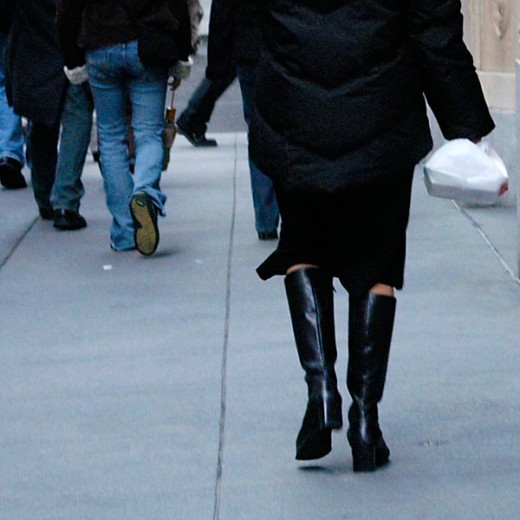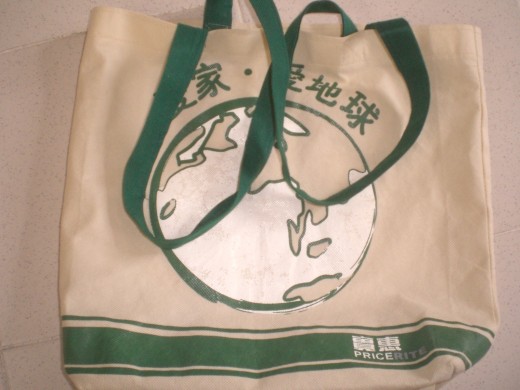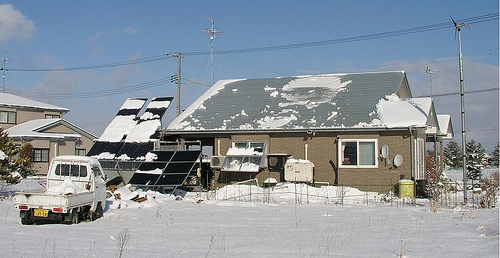Ways to Go Green at Home: Some Easy Suggestions
Collectively, the human race is using up our resources at twice the rate the Earth can sustain over the long haul.
So how do we go green? Do we have to give up electricity? Do we have to stop using everything (including trash pickup) that uses any petroleum?
Such drastic changes t would certainly diminish consumption. Some people have even tried it (for a year) and written books about it. Obviously, though, few people are willing to go that far.
Fortunately, we have lots of easy ways to go green at home that require little or no real sacrifice. If lots of people start doing them, it will have much more impact than a few people going to extremes.
Before going on to solutions, though, we need to acknowledge at least some of the problems.
- Everything we make or use requires natural resources. While many are plentiful, many others are not.
- Everything we make or use requires energy, and the energy sources we use most are becoming unsustainably expensive. They also have undesirable environmental and geopolitical baggage.
- We throw too much stuff away, and as it turns out, there is really no such place as away. We have developed a serious shortage of usable landfill space. Finding more is both a geological and a political challenge.
- Toxic chemicals have made their way into our rivers, ground water, and soil, leading to health problems not only for humans, but wild animals and both wild and cultivated plants.
- The earth's climate is changing.
With polar ice caps and glaciers melting at an alarming rate, no intelligent person can deny the latter problem. Genuine controversy surrounds the question of how much of climate change is caused by how humans waste energy and natural resources, and how much is caused by long-term cyclical trends older than the human race.
Frankly, I tend to lean towards natural and cyclical causes for most of it. But to whatever extent human activity is adding to the warming that will eventually flood coastal areas all over the world, we must do whatever possible not to add to the problem. Whatever ways enough people find to go green at home will help alleviate many different environmental problems.
The following suggestions are hardly comprehensive, but they add up to much more than anyone should bite off at once.
Whatever you are already doing, great; keep up the good work. Add a one or two of these suggestions at a time until they become a habit. Then pick something else.
Is anyone doing everything on the list? Really? Keep adding more little steps. Millions of people going green at home in little steps will eventually result in a tipping point that will change the world for the better.


Free ways to go green
- Stop using drive-through windows.
- Plan your errands carefully to minimize the distance you travel or being on the road at times of heavy traffic.
- Drive less. Walk or take a bicycle more.
- Take other standard advice for saving gas, such as changing oil regularly, maintaining correct tire pressure, and avoiding jackrabbit starts.
- Clean the lint filter on your dryer before every load.
- Use a clothesline instead in nice weather.
- Turn off lights and appliances you are not using.
- Cook using fresh meat and produce. Avoid packaged convenience foods and cut down on fast foods, which are not only nutritionally and environmentally suspect, but more expensive.
- When it's time to shop for groceries, plan meals based on what you already have, especially if it's perishable.
- Compost your garbage (except for meat, bones, or animal wastes)
- Get over trying to keep up with the latest style or fashion. (If enough people do that, fashions will probably change more slowly!) Buy only what you need, not what all the advertisements tell you is hot.
- In deciding which brand of anything to buy, prefer whichever has the least packaging, and especially which uses the least plastic.
- Instead of throwing out clothes and other items you no longer want (assuming they're still usable), give them to a thrift shop or other charity.
- Participate fully in your community's recycling program, and also the plastic bag recycling at the grocery store.
Cheap ways to go green
- Use cloth bags for shopping and try to eliminate using plastic bags as much as possible. Once you get a good supply of cloth bags, using them costs nothing. You'll have to launder them once in a while.
- Use rechargeable batteries. They may cost more and be harder to find, but then you won't need as many.)
- Stop buying water in plastic bottles. Get a reusable metal water bottle instead.
- Wean yourself away from chemical cleaners, fertilizers, and pesticides. Nowadays, non-toxic products may even be less expensive.
- Prefer to buy products made from recycled materials, even if they're more expensive.
- Prefer cloth napkins, dishcloths, and towels to paper napkins and towels.
- Prefer biodegradable trash bags to plastic.
- Recycle household hazardous wastes, used batteries, obsolete electronics, etc. Do not put them in the trash. (This suggestion costs whatever time it takes to drive it to your nearest hazardous waste recycling center. And since it is only open limited hours, it may cost a vacation day. Some stores accept old electronics for recycling. Others accept empty printer cartridges.)
- Keep sure your caulking and weather-stripping in good shape.
- Change the filters on your forced air heating and air conditioning system regularly.
- Get a programmable thermostat, and then set it as cool as you can stand it in the winter and as warm as you can stand it in the summer. Gradually learn to live with cooler temperatures in winter and warmer in the summer.
- Get power strips for your entertainment center('s), your computer and peripherals, and anyplace else with multiple electronic devices, and then turn them off at the power switch to avoid the built-in power waste.
- Get motion sensor plugs for turning on lights, fans, and other electric devices you want on when someone's in a room, but not when it's empty.

Costly ways to go green that pay you back
- If you still have incandescent bulbs, get rid of them. Use CFL, or better still. LED light bulbs instead. The cost of LEDs has come down dramatically in recent years. Stores also carry brighter ones.
- Use solar powered outdoor and shed lighting.
- Install solar powered ventilation for your attic or shed.
- Replace old, drafty single-pane windows with more energy efficient ones.
- Install a movable awning for windows on the sunny side of your house.
- Plant trees to shade the sunny side of your house. It will take years before they grow enough to lower your air conditioning bills, but in the mean time, they will absorb carbon dioxide and add oxygen to the atmosphere.
- Shade your air conditioner condenser with trees or shrubbery.
- Check your home insulation and install more if necessary.
- Insulate your garage.
- Have your plumbing inspected. Fix any leaks and drips it finds and upgrade your faucets, showerheads, toilets, etc. to low-flow models.
- Get a home water filtration system to replace not only bottled water, but also those plastic filtering pitchers.
- Get an insulating jacket for your hot water heater tank.
- Better still, consider replacing your old hot water heater with a tankless heater.
- Buy solar-powered chargers for your cell phones, laptops, and other gadgets.
- Get a rain barrel. Better still, put in a cistern. Use "gray water" for watering your garden, or, if you get a solar powered pump, even your yard. It only takes about a tenth of an inch of rain to fill a 55-gallon barrel with the water that flows from your roof. You can use that even if drought conditions trigger local water restrictions.
- If feasible, buy your own solar or wind generating system and reduce your dependence on your local power company.
There's no way that one article can list all the ways to go green at home, but these suggestions should serve as a reminder that there are many ways to save energy, save water, and minimize trash for the landfill.
Everything that enough people do adds up. Several million people following these, or literally hundreds of similar tips will make a huge impact. If you haven't ever tried to go green at home, start with some of the free or cheap suggestions. It will matter.




